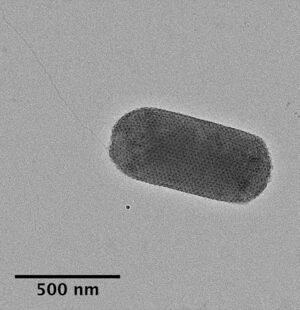Nitrosarchaeum limnium: Difference between revisions
| Line 15: | Line 15: | ||
==Description and Significance== | ==Description and Significance== | ||
<i>Nitrosarchaeum limnium</i> (formerly <i>Nitrosoarchaeum limnia</i>) is a member of the low-salinity ammonia-oxidizing archaea (AOA), first enriched from sediments in north San Francisco Bay estuary, CA, USA (Blainey et al., 2011; Mosier et al., 2012). | <i>Nitrosarchaeum limnium</i> (formerly <i>Nitrosoarchaeum limnia</i>) is a member of the low-salinity ammonia-oxidizing archaea (AOA), first enriched from sediments in north San Francisco Bay estuary, CA, USA (Blainey et al., 2011; Mosier et al., 2012). | ||
As a member of the ammonia-oxidizing archaea (AOA), <i>N. limnium</i> grows using energy obtained from the oxidation of ammonia (NH4+) to nitrite (NO2-), the first step in nitrification. This process is a critical step in the global nitrogen cycle, as buildup of ammonia in environments can lead to eutrophication and other consequences. | As a member of the ammonia-oxidizing archaea (AOA), <i>N. limnium</i> grows using energy obtained from the oxidation of ammonia (NH4+) to nitrite (NO2-), the first step in nitrification. This process is a critical step in the global nitrogen cycle, as buildup of ammonia in environments can lead to eutrophication and other consequences. | ||
Revision as of 19:08, 23 August 2022
Classification
Archaea; Thaumarchaeota; Nitrososphaeria; Nitrosopumilales; Nitrosopumilaceae
Species
|
NCBI: [1] |
Candidatus Nitrosarchaeum limnium
Description and Significance
Nitrosarchaeum limnium (formerly Nitrosoarchaeum limnia) is a member of the low-salinity ammonia-oxidizing archaea (AOA), first enriched from sediments in north San Francisco Bay estuary, CA, USA (Blainey et al., 2011; Mosier et al., 2012).
As a member of the ammonia-oxidizing archaea (AOA), N. limnium grows using energy obtained from the oxidation of ammonia (NH4+) to nitrite (NO2-), the first step in nitrification. This process is a critical step in the global nitrogen cycle, as buildup of ammonia in environments can lead to eutrophication and other consequences.
Genome Structure
Describe the size and content of the genome. How many chromosomes? Circular or linear? Other interesting features? What is known about its sequence?
Cell Structure, Metabolism and Life Cycle
Interesting features of cell structure; how it gains energy; what important molecules it produces.
Ecology and Environment
Habitat; symbiosis; biogeochemical significance; contributions to environment.
References
Blainey PC, Mosier AC, Potanina A, Francis CA, & Quake SR (2011) Genome of a low-salinity ammonia-oxidizing archaeon determined by single-cell and metagenomic analysis. PLoS One 6: e16626. https://doi.org/10.1371/journal.pone.0016626
Mosier AC, Lund MB, & Francis CA (2012) Ecophysiology of an ammonia-oxidizing archaeon adapted to low-salinity habitats. Environ Microbiol 64: 955–963. https://doi.org/10.1007/s00248-012-0075-1
Tolar BB, Mosier AC, Lund MB, & Francis CA (2019) Nitrosarchaeum (gbm01289). In: Bergey’s Manual of Systematics of Archaea and Bacteria, Ed: WB Whitman, John Wiley & Sons: Hoboken, NJ. https://doi.org/10.1002/9781118960608.gbm01289
Author
Page authored by Prof. Bradley Tolar at UNC Wilmington.

